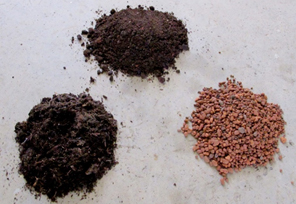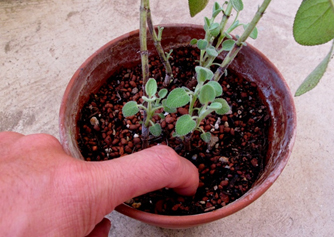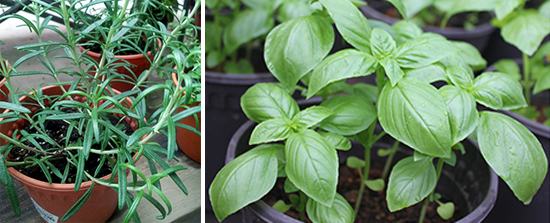Growing Herbs in Your High-rise Home
Have you bought herbs from the supermarket for your cooking, only to use less than half of the packet you paid for? Dreamt of picking fresh herbs straight from your balcony like they do in cooking shows? How about growing these herbs yourself?
Many of us feel daunted by the idea of indoor farming because we think it is impossible to do so in the high-rise buildings we live in given its limited floor space and lighting. However, you do not need a large plot of land in a community garden or a backyard to create your own indoor herb garden.
It might require a bit of patience and lots of love, but with these helpful tips, you can get there! Read on for some helpful pointers to start your own high-rise herb garden.
Choose your Plant to Match your Gardening Abilities
Some of the more common herbs that you might want to plant are: basil, mint, rosemary, thyme, curry leaves, oregano, parsley, ginger, chilli and coriander. Do some research to ‘rank’ the herb plants according to difficulty, and select a plant based on your gardening experience and abilities.
Examine your Gardening Space
Check how much sunlight your gardening space receives in a day. Edible plants need about four to six hours of direct sunlight daily. This can be challenging as our homes are designed to keep us cool and away from direct sunlight, but you can purchase an artificial light (grow light) to replicate light conditions for your plant if desired.
If you are lucky to have a nice sunny spot, remember that there is also a possibility of overexposing your plants. To counter this, create filtered light conditions by using a fabric to shield your plant from the harsh afternoon sun.
Consider the amount of time you can dedicate to attending to your garden daily. Besides being watered, edible plants also have to be pruned and checked for weeds, diseases and pests such as aphids and mealy bugs. They will also need to be transplanted occasionally.
Plan your garden space. Having a garden in a high-rise building can be tricky because there is not much floor space. Not to fret, you can always consider a vertical garden that allows you to hang pots and/or create pocket planters along your wall.
Pro-tip! Draw up a chart to list down factors such as the amount of light and water required as well as the type of soil to use:
|
Herb plant |
Light |
Water |
Soil preference |
|
Basil |
Full Sun |
Lightly every day, multiple times if needed |
Well drained, but moisture retentive |
|
Mint |
Prefer morning sun |
Lightly every day, multiple times if needed |
Well drained |
|
Rosemary |
Full Sun |
twice a week |
Very well drained and not moisture retention |
|
Thyme |
Full Sun |
Every 2-3 days |
Moist-well drained |
|
Oregano |
Full Sun |
Every 2-3 days |
Well drained |
|
Parsley |
Full Sun |
Lightly every day |
Well drained |
|
Curry Leaves |
Full Sun |
Lightly every day |
Moist-well drained |
|
Ginger |
Full Sun |
Lightly every day |
Highly fertile |
|
Chilli |
Full Sun |
Lightly every day |
Well drained and fertile |
|
Coriander |
Prefer morning sun |
Lightly every day |
Well drained |
Understand the Conditions
How much sunlight and water does your plant need? Most of the herbs we use are not native to Singapore. To grow them successfully in our tropical habitat, we need to replicate the conditions of their native habitats. To do so, read up to learn how much sunlight and water the plant requires.

For instance, herbs originating from the Mediterranean region like parsley and thyme require sunny areas. On the other hand, herbs like mint and basil prefer to be kept moist and are intolerant to drying out.
Pro-tip! Keep an eye on the wind conditions of your gardening area as windier locations will require more frequent watering
Select the Right Soil
Let the roots of your plant breathe! Soil available locally is often clayey and does not drain well as it retains a lot of moisture. Waterlogging restricts the roots of your plant from breathing and can lead to root rot.
Use a soil mix with lightweight expanded clay aggregate (LECA) pellets with more organic matter such as earthworm compost. Fine-grade LECA (4mm) helps to ‘open up’ the growing mix, permits excess water to drain away freely and allows root zone to dry out quickly between each watering.

Pro-tip! Concoct your own growing medium by mixing two parts of gritty material, such as fine-grade LECA, with one part of mature compost and one part of commercial loamy soil mix.
Select the Right Pots
Grow your herbs in individual pots, and space them out to permit air circulation between plants as well as to maximise their exposure to sunlight. Doing so will also help to reduce incidences of fungal and bacterial diseases. Make sure your pots have drainage holes for water to go through to prevent water logging.
Pro tip! Rotate your pots periodically, say weekly, at right angles, to allow all sides of the plant to be directly exposed to sunlight.
Quench their Thirst
We all know that water is crucial to a plant’s growth. But how do you tell when it is time to water again?

Stick a chopstick deep into the pot and then pull it out to take a look. Moist soil will have bits sticking to the chopstick. Alternatively, use an index finger to feel for moisture below the soil surface. Water again only if the potting mix is on the slightly dry side.
Feed your Plants the Right Nutrients
The soil available locally may not have the right nutrients for your plants. If you are using an organic fertilizer like compost, use it once a week. For chemical fertilizers, use it once every two weeks.
Be careful not to over-feed as it may result in rapid and tender growth which attracts pests.
Pro-tip! Use a few slow-release fertilizer pellets for your herb plants once a week.
Pinch to Grow an Inch
Pruning encourages the plant to produce new stems and leaves, and is essential if you want the young plant to flourish into a lush and leafy one. As the plant grows, pinch off flowers to keep it alive and prevent the leaves from becoming bitter.
You can prune herbs by either using your fingers or scissors. Fingers should be used for more delicate plants. Be careful to not tear or rip off the stems of plants, as it may lead to diseases.
Pro-tip! Use the pinched-off flowers of your plants to flavor teas or honey.

Every herb has its own pruning requirements. Leafier plants like basil can die quickly after blossoming, so pruning is important. Cut them right where the leaf meets the stem. For woodier plants like rosemary, trim them often so they do not grow too woody and continue to grow new leaves. As soon as you start to see new growth, pinch some of the leaves back.
Trim the plants top-down and outside-in. Pinch off about 2 to 4 inches from the top of the stem and no more than 1/3 of the plant in total.
Maintaining a healthy herb garden takes time and effort, but it will grow well if you do it right. Do not give up if your seeds do not germinate or grow as well on the first few tries. Keep experimenting to find the perfect conditions your plant needs.
Learning More
Need more gardening tips? Join our Community in Bloom (CIB) programmes, form your own gardening interest group, or check out our book ‘My Green Space: indoor gardening made simple’! If you want to involve the entire family, join us at our monthly Gardener’s Day Out @ HortPark and meet fellow gardening enthusiasts, participate in eco-friendly workshops and shop for new plants.
Be fully immersed in horticulture and gardening and come down for the Singapore Garden Festival HortShow happening at the newly-opened Jurong Lake Gardens, happening from 27 April to 5 May. The festival will have various horticultural competitions, workshops, activities for the whole family, retail booths and more!
For more gardening resources including instructive videos and tips for caring for your plants, click here.
Text by Lynn Chan
About the writer
Lynn Chan is a Third Year Mass Communications student of Nanyang Technological University (NTU). As part of her school’s professional internship programme, she is working in NPark’s Communications and Community Engagement department for six months. During this time, she created posts for NParks' social media platforms, wrote articles for My Green Space, assisted with media queries and was involved in the preparation of media materials for events such as the Festival at the Fort and the opening of Jurong Lake Gardens.
Please email wong_yeang_cherng@nparks.gov.sg for more information on our internship programme.





Have views or comments on this article? Let us know via this form. If you would like to give us feedback on any other areas relating to our parks and gardens, please submit via https://www.nparks.gov.sg/feedback